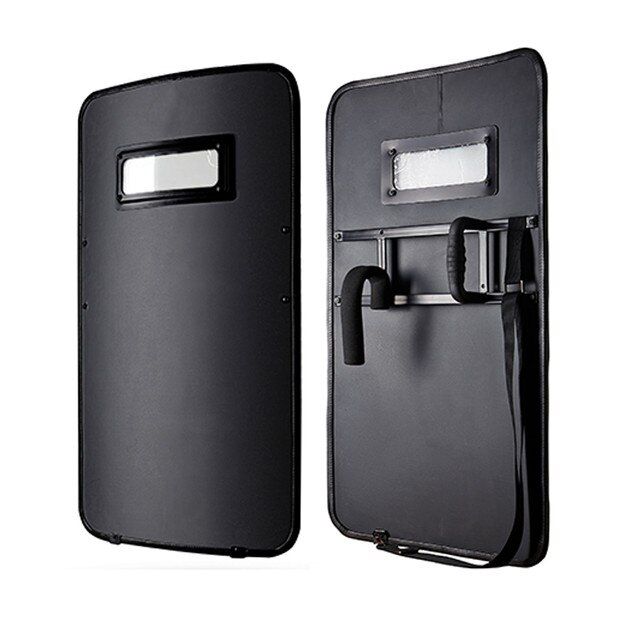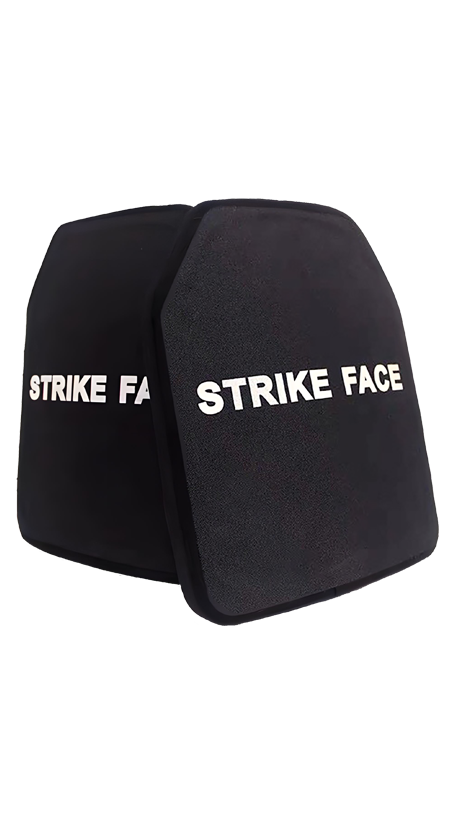What are the classifications, sizes and protection standards of bulletproof shields?
A bulletproof shield refers to a piece of equipment that can be used to protect the safety of personnel, usually made of bulletproof materials, it can effectively reduce the damage of attacks such as guns and explosions, and provide important security for armed police, special forces and military forces, etc. Protect. according to different materials
Depending on the quality, size and purpose, bulletproof shields can be divided into the following three categories:
Soft bulletproof shield: Soft bulletproof shield is made of soft bulletproof material, such as Kevlar fiber, etc. These ballistic shields are suitable for protection against low-velocity bullets such as pistols and shotguns. It is widely used by police and SWAT units because of its portability and handling.
 Hard bulletproof shields: Hard bulletproof shields are made of hard materials, such as chrome alloy, titanium alloy, etc. These ballistic shields have high ballistic protection and are suitable for protection against high-velocity shooting and explosive threats. Because of its large size and heavy weight, it usually requires multi-person cooperative operation, and is suitable for special operations against high-threat targets such as terrorists.
Hard bulletproof shields: Hard bulletproof shields are made of hard materials, such as chrome alloy, titanium alloy, etc. These ballistic shields have high ballistic protection and are suitable for protection against high-velocity shooting and explosive threats. Because of its large size and heavy weight, it usually requires multi-person cooperative operation, and is suitable for special operations against high-threat targets such as terrorists.
Folding ballistic shields: Folding ballistic shields typically consist of multiple sections of collapsible metal plates that provide protection against low-velocity fire such as pistols and assault rifles. This type of bulletproof shield is easy to carry and use due to its small size and weight, and is suitable for police and other institutions and troops that need to perform tasks in narrow spaces or in complex environments.
There are also differences in the size and protection standards of bulletproof shields. Common protection standards include NIJ0108.01, STANAG 2920, EN1522/1523, etc. When choosing a bulletproof shield, it is necessary to choose the most suitable size and protection standard according to actual needs to ensure that the protection effect achieves the expected effect.
What are the ballistic materials related to protective shields?
There are many ballistic materials associated with protective shields, the following are some of them:
Soft bulletproof materials: such as bulletproof fleece, Kevlar, etc., are mainly used to make light bulletproof vests and stab-proof gloves, which can effectively reduce the damage of guns and sharp objects to the body.
Hard bulletproof materials: such as hard synthetic ceramics, hard metals, titanium alloys, etc., are mainly used to make bulletproof plates, protective shields, bulletproof vehicles, etc., which can effectively resist high-speed shooting and blast shock waves.
Composite protective materials: such as soft bulletproof materials reinforced with hard materials and hard bulletproof materials reinforced with soft materials, have multiple protective functions.
 New bulletproof materials: such as silicon carbide, aluminum boride and other new high-performance ceramic materials, as well as metal liquid infiltration materials, etc., they have higher hardness and anti-elasticity, and can effectively resist various high-speed shooting and impact.
New bulletproof materials: such as silicon carbide, aluminum boride and other new high-performance ceramic materials, as well as metal liquid infiltration materials, etc., they have higher hardness and anti-elasticity, and can effectively resist various high-speed shooting and impact.
How to choose the appropriate bulletproof material when purchasing a protective shield?
When purchasing a protective shield, you should choose the appropriate bulletproof material according to the specific use environment and safety requirements. Here are some suggestions for reference:
Selection of soft bulletproof materials and hard bulletproof materials: If you are going to perform tasks such as close-range raids or fixed target guards, you can choose hard bulletproof shields, such as chrome alloys, titanium alloys, etc.; if you need flexible movement and easy portability, you can choose Choose soft soft bulletproof shields, such as Kevlar fiber, etc.
Density and thickness of bulletproof materials: In the selection of protective shields, it is usually necessary to weigh the balance between lightness and protective ability. The greater the density and thickness of the bulletproof material, the stronger the corresponding protection ability, but the weight will also increase, making it inconvenient to carry.
Determination of protection level: The protection level of a protective shield determines the level of threat it can resist. If a higher level of threat may be encountered in the working environment, it is necessary to choose a bulletproof material with stronger protection capability and a higher level of protective shield.
Quality and Detail Considerations: When choosing a protective shield, the quality of the material and details of the manufacturing process also need to be considered. It is necessary to ensure that the selected materials and manufacturing processes can meet national or international safety standards, and ensure that the protective shields purchased have sufficient durability and stability.
To sum up, the selection of appropriate bulletproof materials and protective shields requires comprehensive consideration and trade-offs according to specific usage conditions. It is recommended to consult a professional or learn more about it before purchasing to ensure the most suitable product is selected.
 Hard bulletproof shields: Hard bulletproof shields are made of hard materials, such as chrome alloy, titanium alloy, etc. These ballistic shields have high ballistic protection and are suitable for protection against high-velocity shooting and explosive threats. Because of its large size and heavy weight, it usually requires multi-person cooperative operation, and is suitable for special operations against high-threat targets such as terrorists.
Hard bulletproof shields: Hard bulletproof shields are made of hard materials, such as chrome alloy, titanium alloy, etc. These ballistic shields have high ballistic protection and are suitable for protection against high-velocity shooting and explosive threats. Because of its large size and heavy weight, it usually requires multi-person cooperative operation, and is suitable for special operations against high-threat targets such as terrorists. New bulletproof materials: such as silicon carbide, aluminum boride and other new high-performance ceramic materials, as well as metal liquid infiltration materials, etc., they have higher hardness and anti-elasticity, and can effectively resist various high-speed shooting and impact.
New bulletproof materials: such as silicon carbide, aluminum boride and other new high-performance ceramic materials, as well as metal liquid infiltration materials, etc., they have higher hardness and anti-elasticity, and can effectively resist various high-speed shooting and impact.